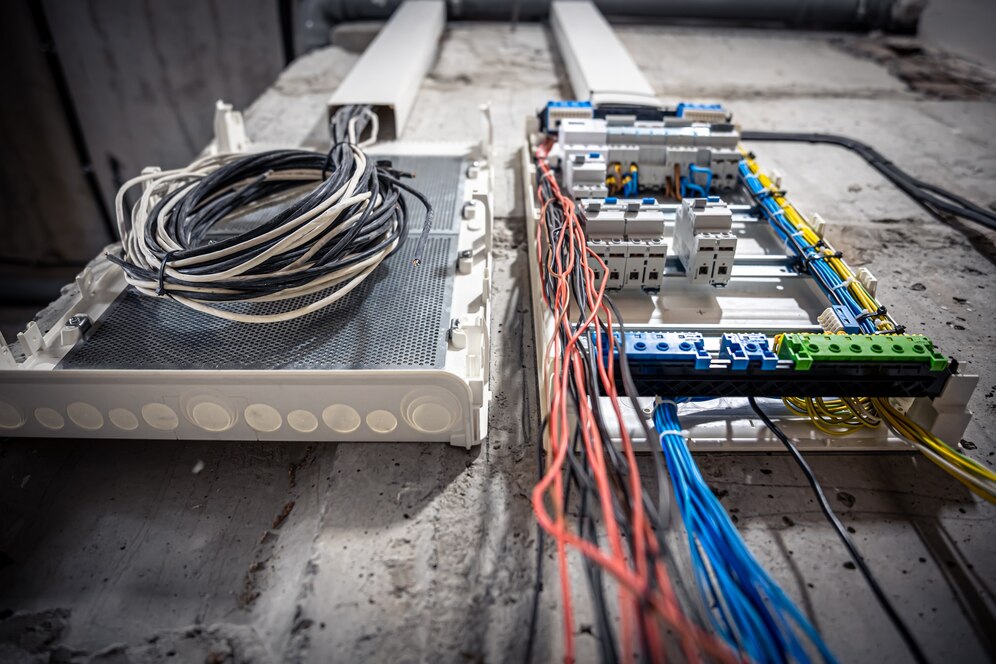Securing cable infrastructure in industrial and commercial spaces is a critical aspect of facility management and operations.
With the increasing reliance on interconnected systems and digital technologies, protecting cables from threats such as vandalism, theft, and environmental damage is essential for maintaining productivity and minimizing downtime.
In this article, we will explore ten expert tips for securing cable infrastructure in industrial and commercial environments.
1. Conduct Comprehensive Risk Assessments
Before implementing any security measures, conduct thorough risk assessments to identify potential vulnerabilities and threats to cable infrastructure.
Assess factors such as the physical location of cables, access points, environmental conditions, and the presence of valuable assets.
This will help you prioritize security measures and allocate resources effectively to address the most significant risks.
2. Implement Physical Security Measures
Implement physical security measures to deter unauthorized access to cable infrastructure. Install perimeter fencing, access control systems, and surveillance cameras to monitor critical areas and restrict entry to authorized personnel only.
Secure cable enclosures and distribution points with locks, tamper-resistant covers, and anti-climb measures to prevent tampering and sabotage.
3. Utilize Cable Support Systems
In industrial and commercial spaces, it is crucial to utilize cable support systems to ensure the efficient and safe organization of cables.
By utilizing cable trays, cable ladders, and cable channels, businesses can prevent tangling, wear and tear, and potential hazards caused by loose cables.
Cable Support Systems not only help to maintain a clean and organized workspace but also make it easier to troubleshoot and upgrade cables when needed.
Properly securing cable infrastructure through support systems is essential for maintaining a reliable and efficient network in any industrial or commercial setting.
4. Employ Cable Locking Solutions
Secure cables in place using locking solutions such as cable ties, clamps, and fasteners to prevent unauthorized removal or tampering.
- Locking Solutions: Utilize cable ties, clamps, and fasteners to firmly secure cables, preventing unauthorized access or tampering.
- Durable Mechanisms: Opt for locking mechanisms that exhibit robustness, ensuring prolonged effectiveness against attempts of tampering or removal.
- Tamper-Resistance: Prioritize mechanisms that are designed to resist tampering, deterring unauthorized individuals from accessing or interfering with the cables.
5. Enhance Fire Protection Measures
Mitigate the risk of fire-related damage to cable infrastructure by implementing robust fire protection measures. Install fire detection and suppression systems in areas where cables are located, such as equipment rooms and server facilities.
Use fire-resistant cable coatings, insulation materials, and enclosures to enhance resilience against heat and flames.
6. Minimize Electromagnetic Interference (EMI)
Shield cables from electromagnetic interference (EMI) to maintain signal integrity and prevent data loss or corruption.
Use shielded cables, connectors, and grounding techniques in areas where EMI is a concern, such as industrial environments with high electrical noise levels. Ensure proper cable routing and separation to minimize the risk of interference.
7. Secure Access Points
Control access to cable infrastructure by securing access points such as manholes, vaults, and equipment rooms.
Use locks, covers, and barriers to prevent unauthorized entry and tampering. Implement access control systems with biometric authentication, keycard readers, or PIN codes to restrict access to authorized personnel only.
8. Monitor and Maintain Regularly
Regularly monitor and maintain cable infrastructure to detect and address security risks and issues promptly. Conduct routine inspections of cables, connectors, and enclosures to check for signs of damage, wear, or tampering.
- Regular Monitoring and Maintenance: Consistently oversee cable infrastructure to identify and resolve security concerns promptly, preventing potential threats or breaches.
- Routine Inspections: Conduct periodic examinations of cables, connectors, and enclosures to detect any indications of damage, wear, or unauthorized tampering, allowing for timely intervention and mitigation.
- Preventive Maintenance: Implement scheduled maintenance tasks for both equipment and cable pathways to uphold optimal performance and extend their lifespan, reducing the likelihood of unexpected failures or vulnerabilities.
9. Educate and Train Employees
Educate employees about the importance of cable security and their role in maintaining it. Provide training on recognizing suspicious behavior, reporting security incidents, and adhering to established security protocols.
Foster a culture of security awareness and accountability to empower employees to play an active role in safeguarding cable infrastructure.
10. Develop Incident Response Plans
Develop comprehensive incident response plans outlining procedures for addressing security breaches and emergencies related to cable infrastructure.
Establish clear protocols for incident reporting, escalation, and resolution, including coordination with law enforcement and emergency responders if necessary.
Conduct regular drills and exercises to test the effectiveness of response plans and ensure readiness for real-world scenarios.
Conclusion
Securing cable infrastructure in industrial and commercial spaces requires a proactive and multi-layered approach encompassing risk assessment, physical security measures, cable protection systems, and employee training.
By implementing expert tips and best practices for cable security, organizations can mitigate risks, protect valuable assets, and maintain the reliability and integrity of their critical infrastructure.
